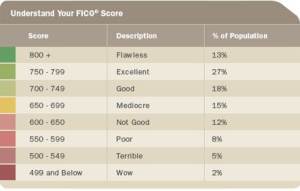Sticker shock is not uncommon for those who have not purchased or refinanced a home loan in the last 4-5 years. This post is to update the reader on the current market.
As background, the cost of an appraisal in the Denver-Metro area historically ranged from $300-$350. Typically, the appraisal was performed by a sole-practitioner, state licensed appraiser. That business model has all but disappeared for residential appraisals for lending purposes.
Given the myriad of new regulations throughout the mortgage industry, $450 $475 is now the going price for an appraisal in the Denver-Metro market.
A combination of market conditions, along with a shortage of approved appraisers, coupled with how soon one needs an appraisal, translates to a rush appraisal. A rush appraisal is defined as an appraisal report completed in less than three weeks. The cost of a rush appraisal may jump to $650.
If one lives in the mountains, let’s say Evergreen or Black Hawk, and needs a rush appraisal, expect to pay even more.
As a matter of practice, in this market, the Appraisal Management Company (AMC) gets a sizeable portion of the fee you must pay for an appraisal. In fact, the appraiser may now be paid less per appraisal than prior to the regulatory reforms. In fairness, the appraiser now gets paid for every transaction, which was not always the case prior to the enactment of Dodd-Frank and the boom of the AMCs.
The market has fewer sole-practitioner appraisers as most now work for an AMC. The AMC model has been around for decades, but due to the Dodd–Frank Wall Street Reform and Consumer Protection Act of 2010, commonly referenced as the Dodd-Frank Act, the AMC is more the norm than the exception.
There are those, whose sentiment is expressed by Sam Heskel from a recent post in the Origination News, who believe consumers would be well served by seeing a breakdown of the fees, for the appraiser and the AMC, as separate line items on the closing document.
Regarding the sticker shock, this is an entirely new mortgage lending environment. You may notice many changes, some of them very good, as you go through the process of obtaining your new mortgage.
For suggestions on what to do to prepare for an appraisal, see: Preparing for The Appraisal – Selling or Refinancing.
Financially Speaking™ James Spray RMLO, CNE, FICO Pro | CO LMO 100008715 | NMLS 257365 | September 27, 2015 | Update 8/28/16
Notice: The information on this blog is opinion and information. While I have made every effort to link accurate and complete information, I cannot guarantee it is correct. Please seek legal assistance to make certain your legal interpretation and decisions are correct. This information is not legal advice and is for guidance only. You may use this information in whole and not in part providing you give full attribution to James Spray.












